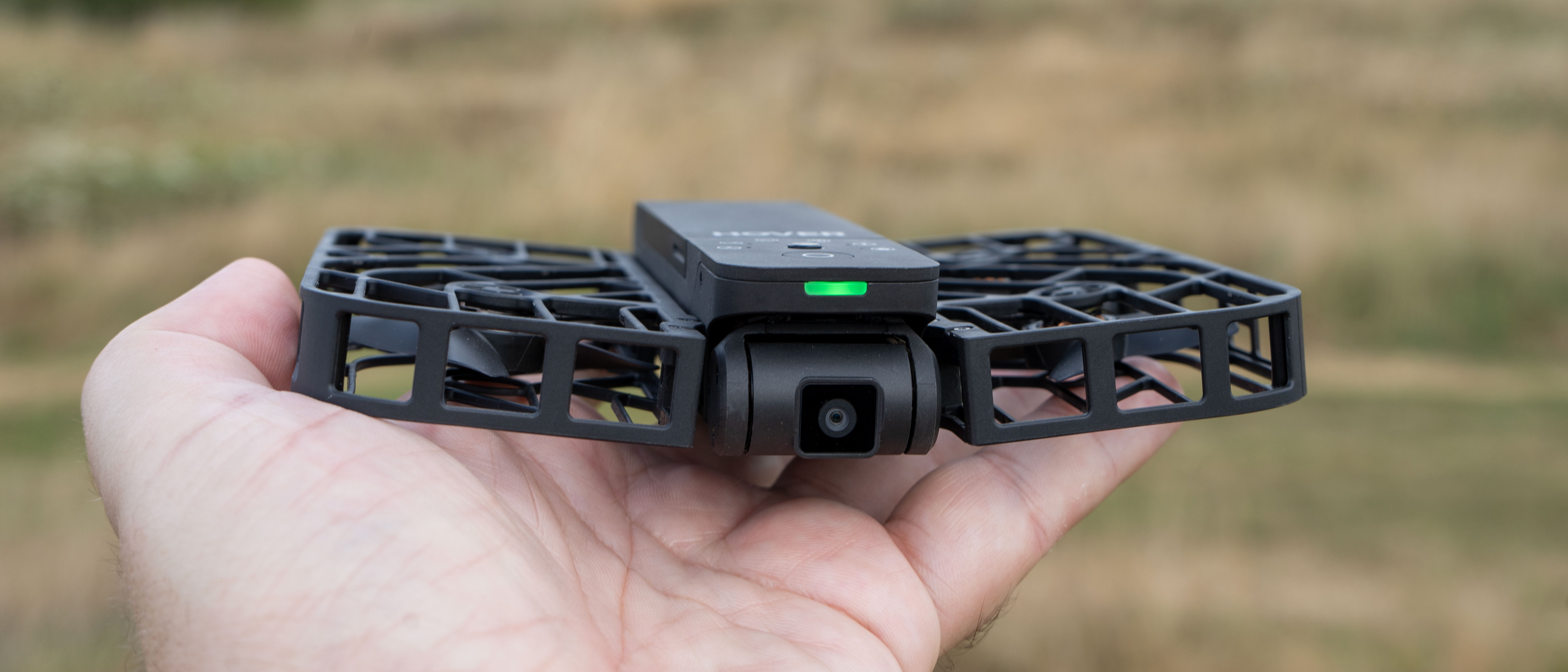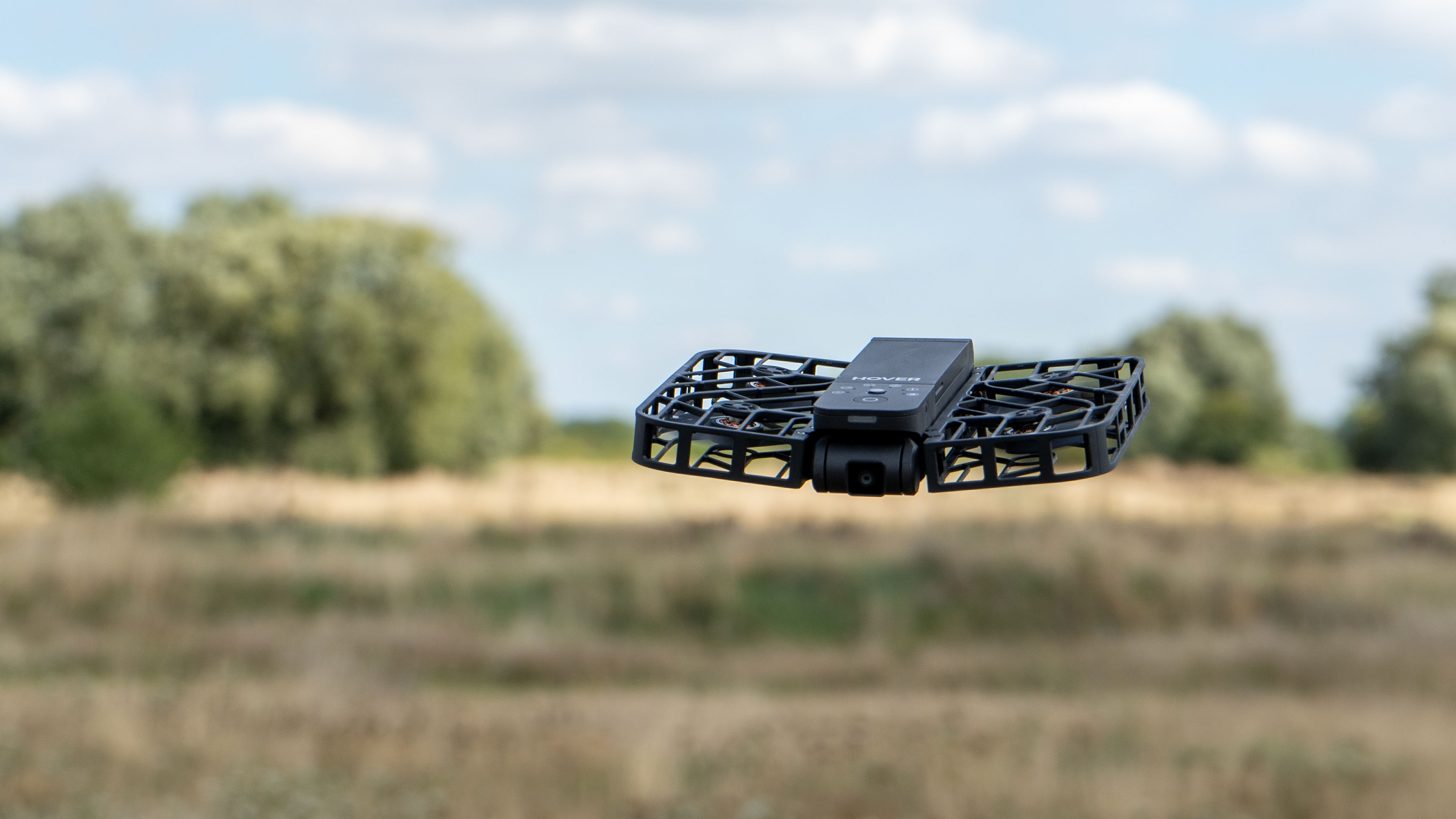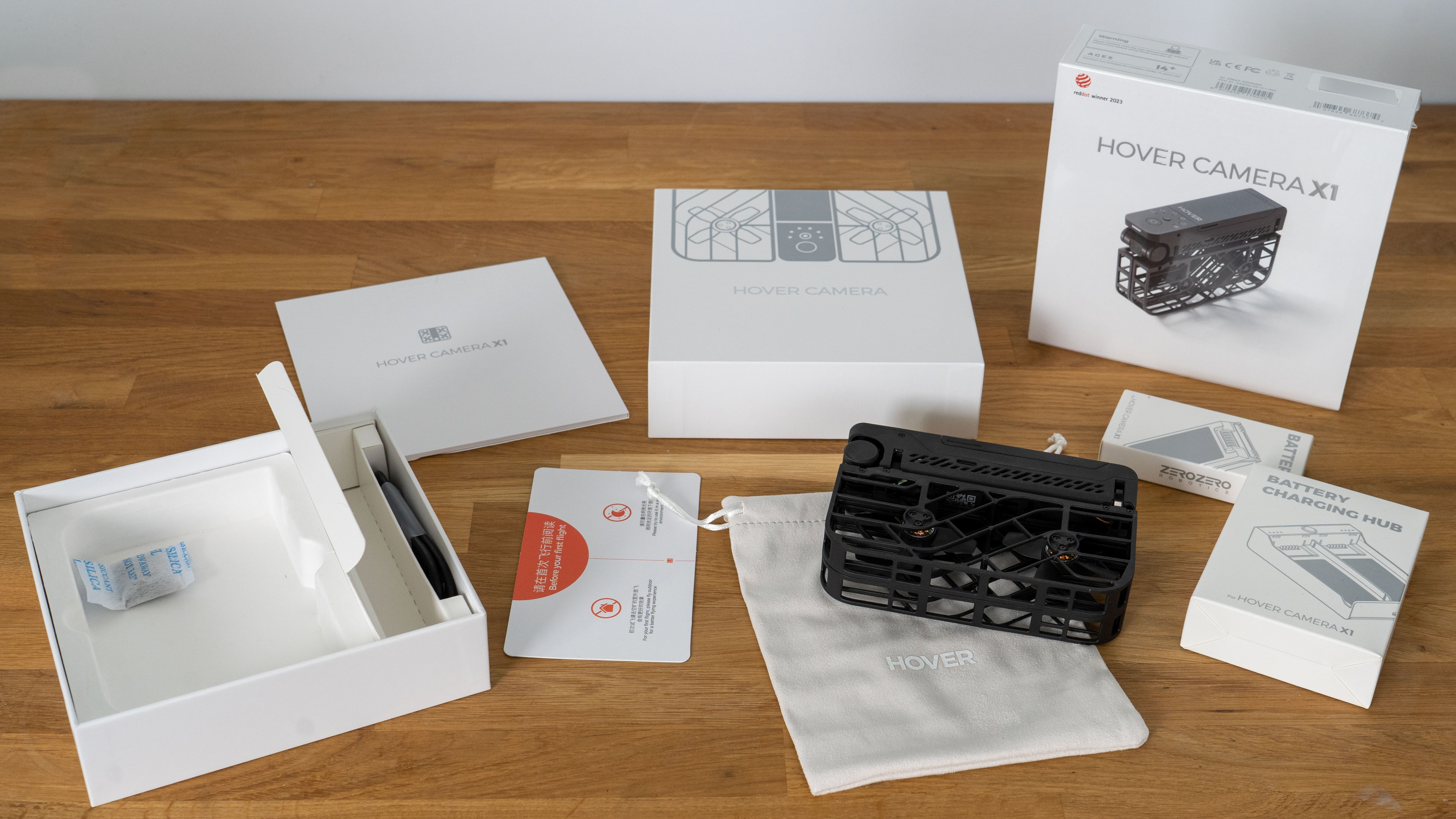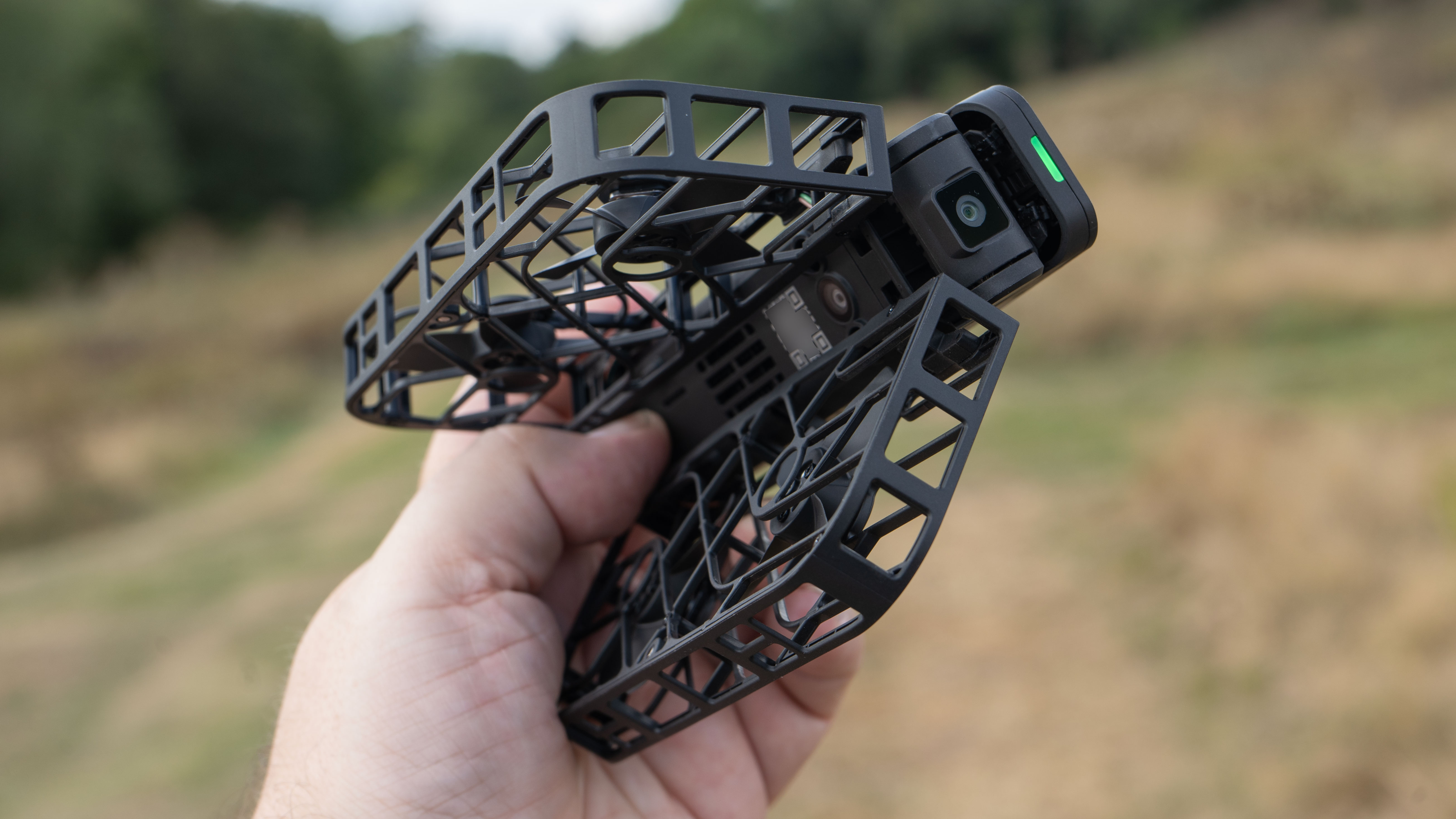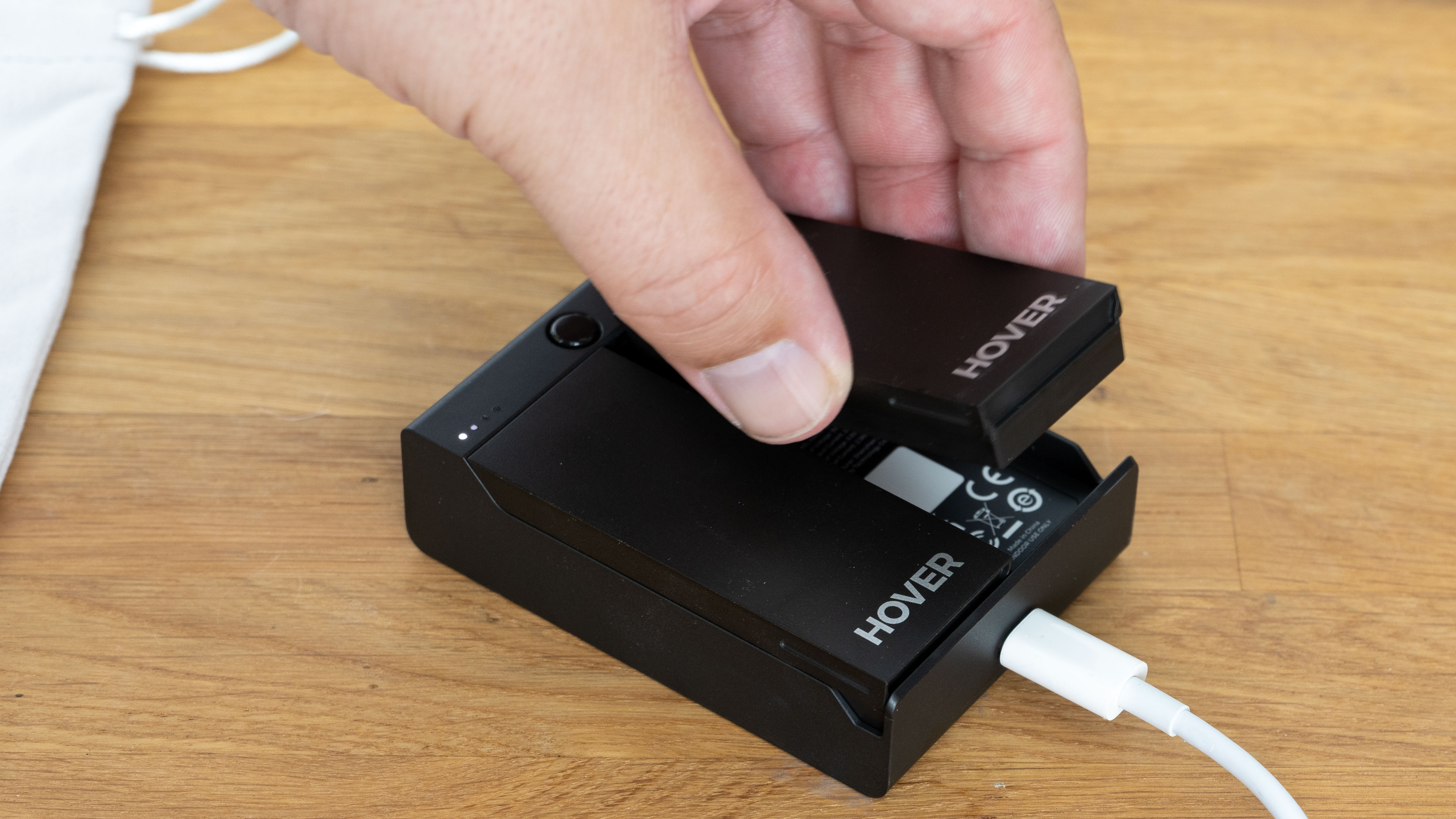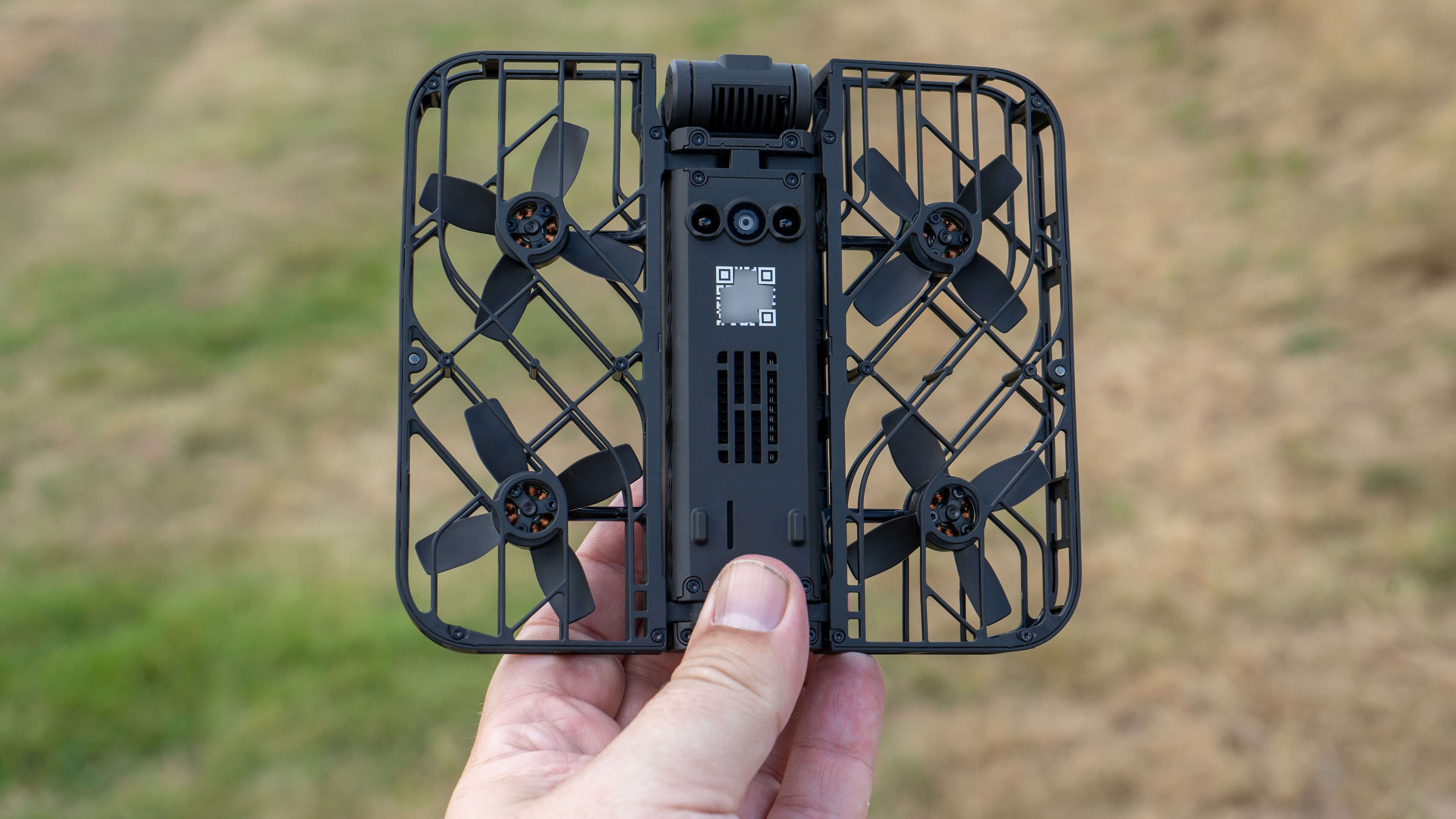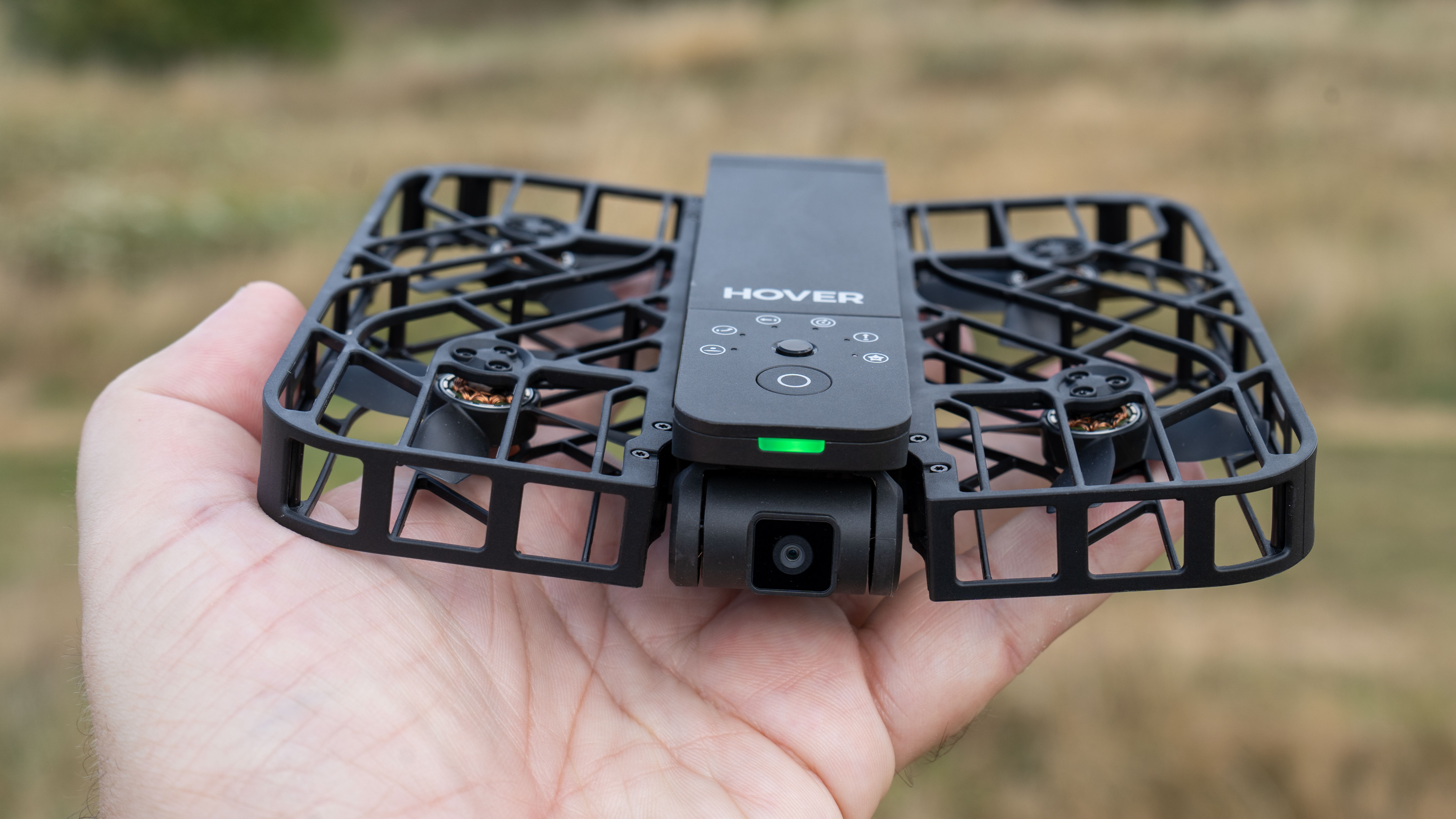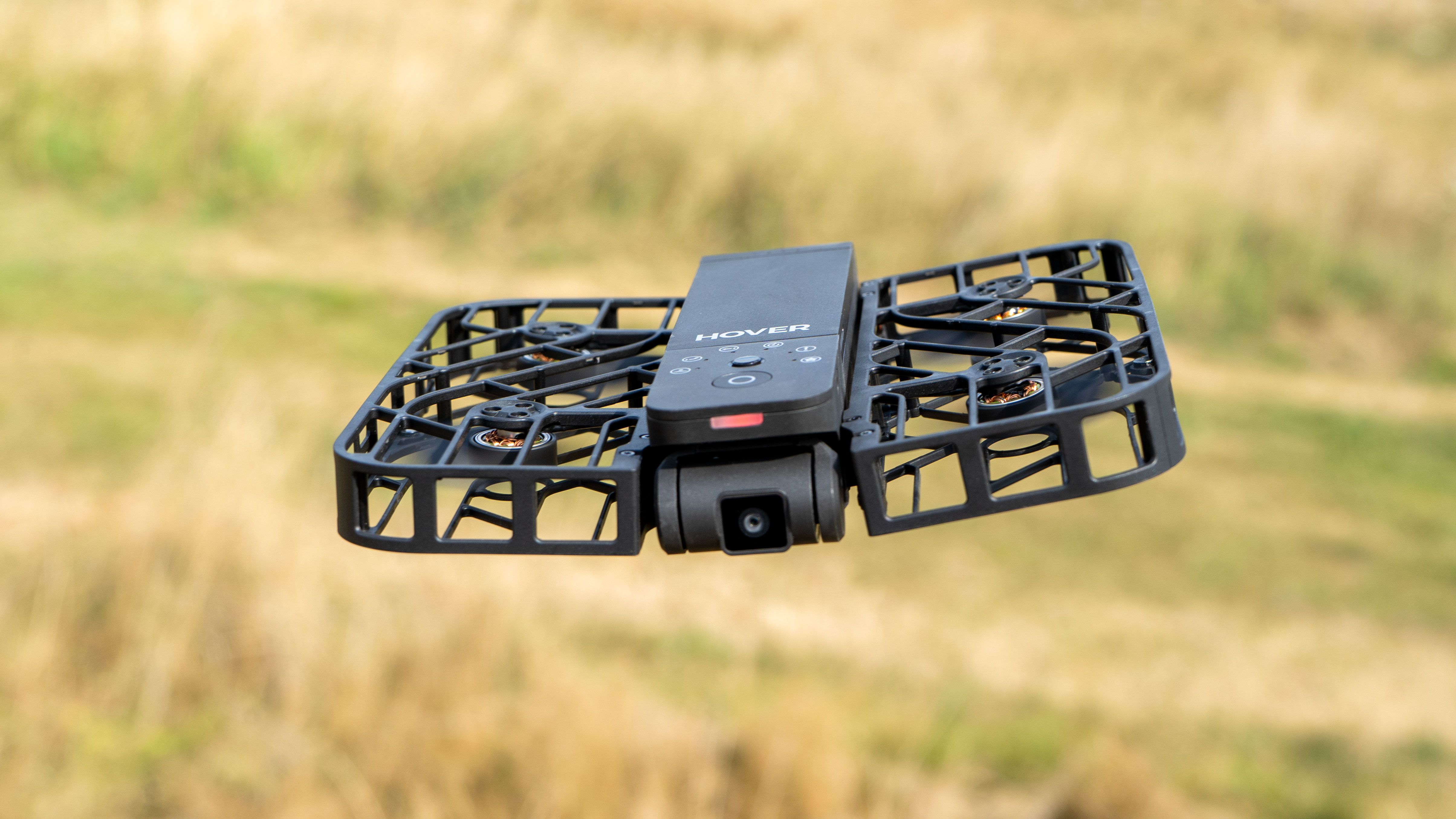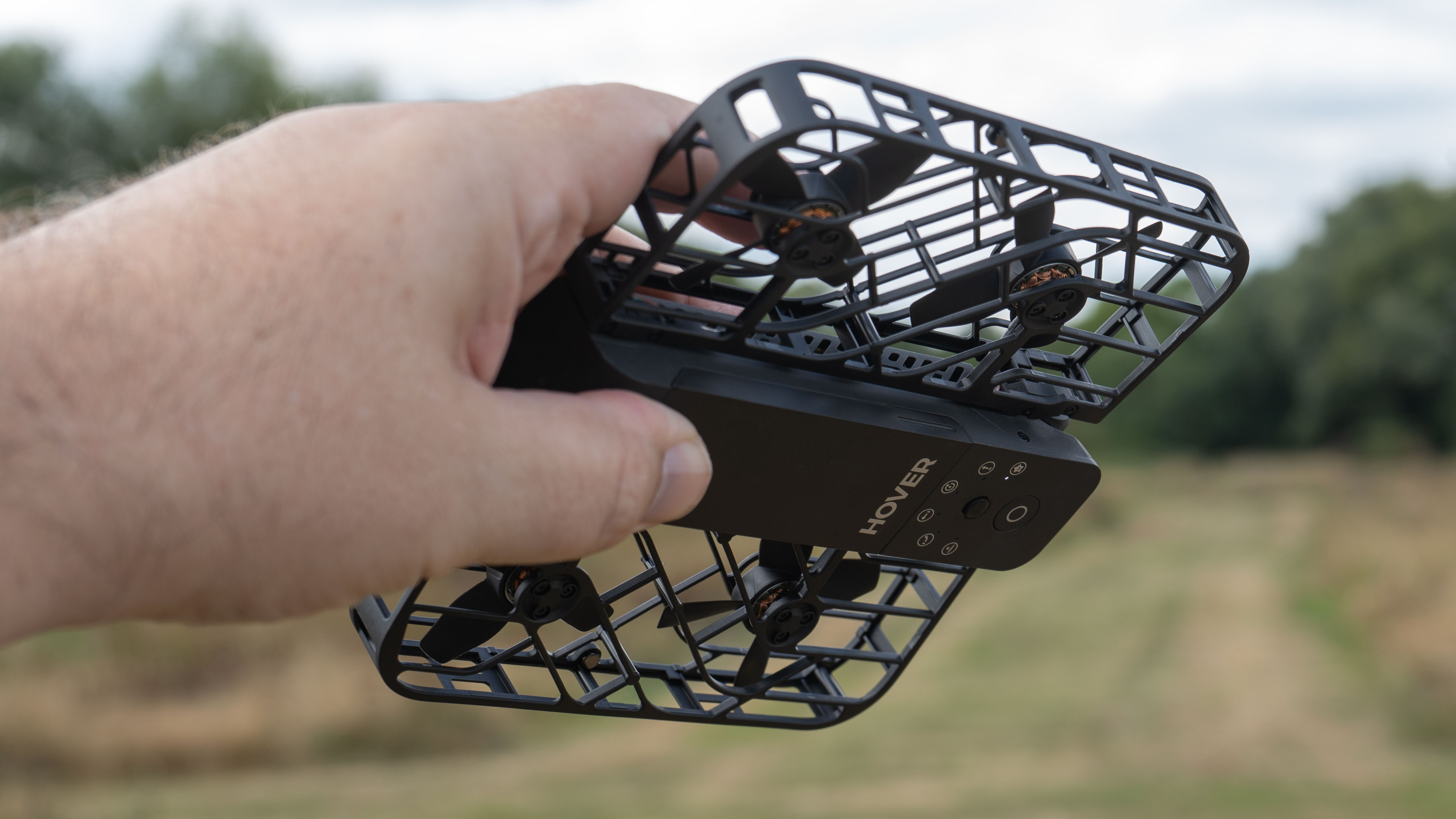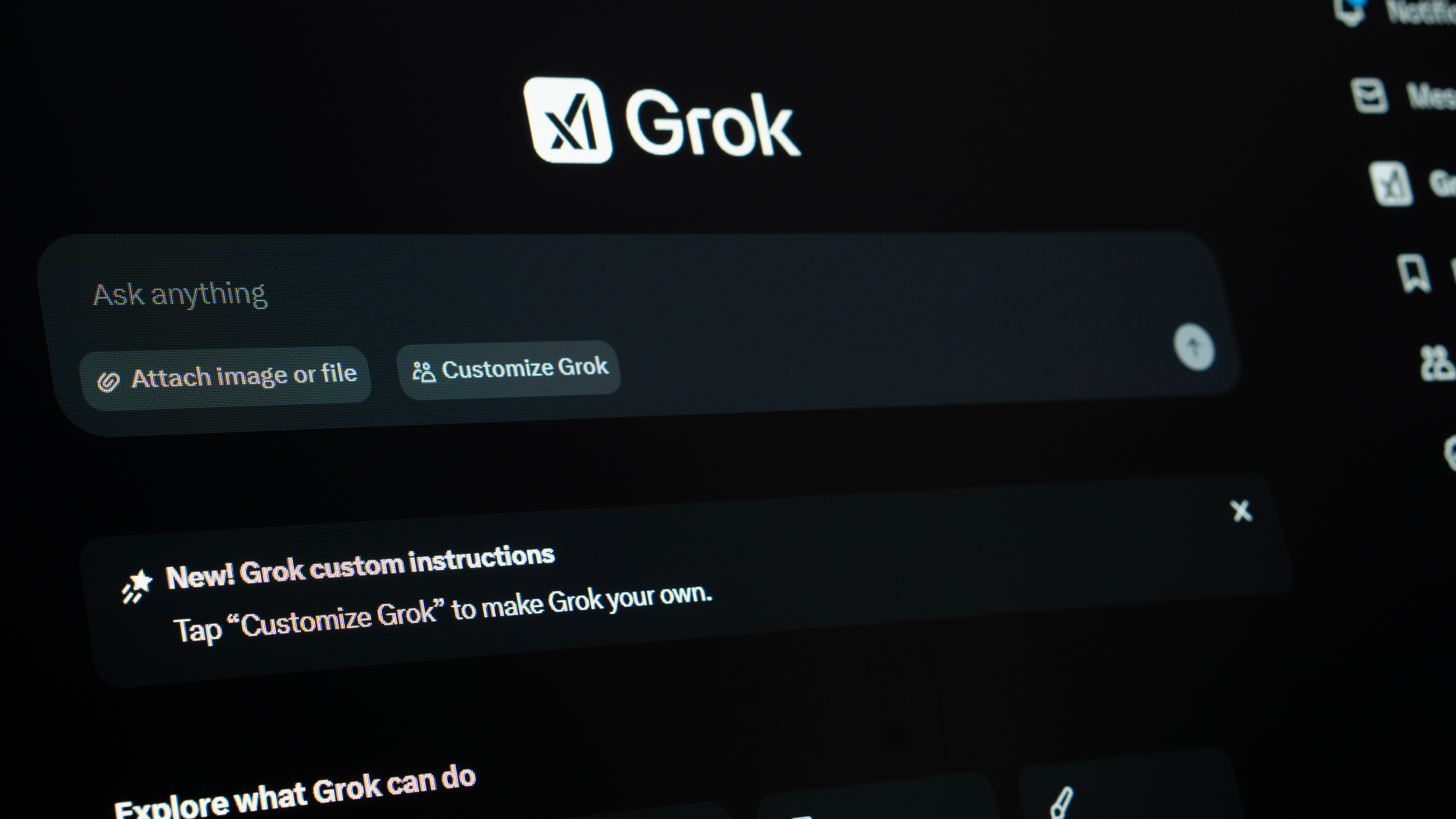Digital Camera World Verdict
Somehow the Hover X1 seems to have re-defined what's needed from a drone for many, answered those needs, and done so with aplomb. It folds elegantly and will fit in a big pocket, the AI does a great job of tracking the subject, and the ability to operate without a controller is like being unshackled. It might not worry top camera drones on video quality or battery life, but that isn't the point.
Pros
- +
Small and very light
- +
Propellors
- +
Can be operated without a phone
- +
2.7K video
- +
tilting camera
Cons
- -
No collision sensors
- -
Battery life limited
- -
Data stored onboard – no MicroSD slot
- -
No GPS
Why you can trust Digital Camera World
Until now consumer drones have either been toys or tools for video makers & photographers. In either case, active piloting was expected for the joy or the creativity. The notable exception to this rule, Skydio, with its advanced AI, has just excused itself from the consumer market so it can concentrate on clients with deeper pockets, but where does that leave the dream of a drone which is more 'angel on your shoulder' than all-consuming task?
That dream has been handed on to the HoverAir X1, or HoverCamera X1. (Yes, this is another product born of crowdfunding which seems to have spent some of that process settling on a name.)
Anyway, naming aside, this is a successfully funded reality you can actually buy – and a RedDot winner at that. The question is does it live up to the lofty goal of being able to capture aerial footage of you on the go? It certainly adopts a different – and cheaper – approach than Skydio, with what its creators call a VIO positioning system that they say is centimeter-level in its precision without the need for GPS.
HoverAir X1: Specifications
| Video resolution | 2.7K 30fps / 1080P 60fps / 1080P HDR 30fps |
| Stills | 4000 x 3000 pixels |
| Memory | 32Gb storage built-in |
| Props | 2-inch |
| Battery | 1050 mAh (2S) |
| Speed | 7 m/s (15.5 mph) |
| Modes | Hover / Zoom Out / Follow / Orbit / Bird's Eye / Dolly Track / Snapshot / Manual |
| Weight | 125g (4.4oz) |
| Dimensions | 127 x 86 x 31 mm (folded) |
HoverAir X1: Build & Handling
Opening the box for the Hover X1 set me through three distinct feelings. Number one: The quality of the external packaging got me excited, an optimism which slipped only when I reached the device itself and lifted it up. Then – feeling two – I couldn't help but feel a tinge of disappointment because I found it hard to separate the stunning lightness from a perception of flimsiness. Finally – three – a little longer in hand, though, and it became apparent to me that my first feeling was a flawed perception. This is a quality product evidenced in so many little ways. For example, the 4-light battery meter, familiar to other drones, doesn't just flash – it pulses. A subtle but lovely touch.
Charging, by the way, is via USB-C. There is a socket on the side of the drone which folds like a book; when open the 'covers' hide the USB-C socket, but when closed they not only make it neatly pocketable but form a good shield around the camera's 1-axis gimbal. A cog-like arrangement means they mirror each other as they open too – very neat – and are sprung gently so they remain in position.
Although not essential in day-to-day use, you'll need to kick off by installing the phone app, pairing on Bluetooth, and running any firmware updates. The app is neat and tidy with useful guidance on each function. It is also the means of changing settings like video quality and what the Custom Mode button is set up to do, and allows live-view if the drone is within wi-fi range (about 30m / 100ft).
The drone has no memory card slot – recordings can be downloaded from the device's 32GB storage to your phone or by plugging it into your computer via the USB-C socket where the files (.mp4 & jpeg) appear just like a memory card.
The best camera deals, reviews, product advice, and unmissable photography news, direct to your inbox!
HoverAir X1: Flight Performance
The drone is surprisingly painless to operate. All that's required is to power up (long press of the big button) and to choose a mode by tapping the little button. This cycles through the elegant curved arrangement of modes but don't worry, there's no need to remember the actual mode because a voice prompt will tell you what you've selected. After that a short press of the power button as you hold the drone up with its camera looking into your eyes is enough to initiate the flight.
At the correct point in the flight, the light beneath the camera lens turns red to indicate it has begun recording. When it's finished, the drone will simply hover (this depends a little on the mode).
Each request is a bit like a single action, after which the drone will want to return to you, loyally. Before I tried it I was sceptical – the instructions say stick your palm out under the drone and the device will land on it, but I imagined it might take fright. Not at all; it worked promptly, like a very well-behaved pet. (If you're too impatient for a gentle hand landing, you can also pluck the craft from the air and flip it upside down fast – it'll power down when the gyros sense the motion).
Indoor performance isn't quite what you might hope for; not needing GPS is good, but the visual positioning using the camera beneath the drone does need decent light.
Manual flight isn't unlocked until you've had at least 5 goes, and requires the phone app to control. Curiously the on-screen control layout is vertical, not horizontal, which feels wrong to me (too much experience of standard Mode 2 controllers), but is sensibly deliberate for a short-range device like this.
HoverAir X1: Camera Performance
The image stabilization is a mix of mechanical (y-axis) and electronic, which actually works reasonably well (the same approach has been successful on DJI's FPV drones). The mechanical y-axis also provides adjustable tilt, available in manual flight as well as necessary in features like 'Zoom Out' (which DJI users might recognize as a 'Dronie').
The camera shoots MP4 and JPEGs and has a fixed focal length of 19mm EFL, and a f/2.4 aperture, so nothing exceptional but the bit rate which varies between 30 and 50 kbps makes it more competitive with a DJI drone than I've seen on a lot of budget drones which stick to the lower end of that range or below.
The stills are a crisp 4000 x 3000 pixels – sure, that's only 12 megapixels but, like a good mobile phone camera, every pixel has its own detail and you don't find yourself suspecting the sensor is actually lower resolution. I could see every blade of grass and my supremely untidy hair in my test images. The contrast was a little high when the sun was out, but nothing too surprising in the circumstances (testing conditions were cloudy and sunshine/cloudy).
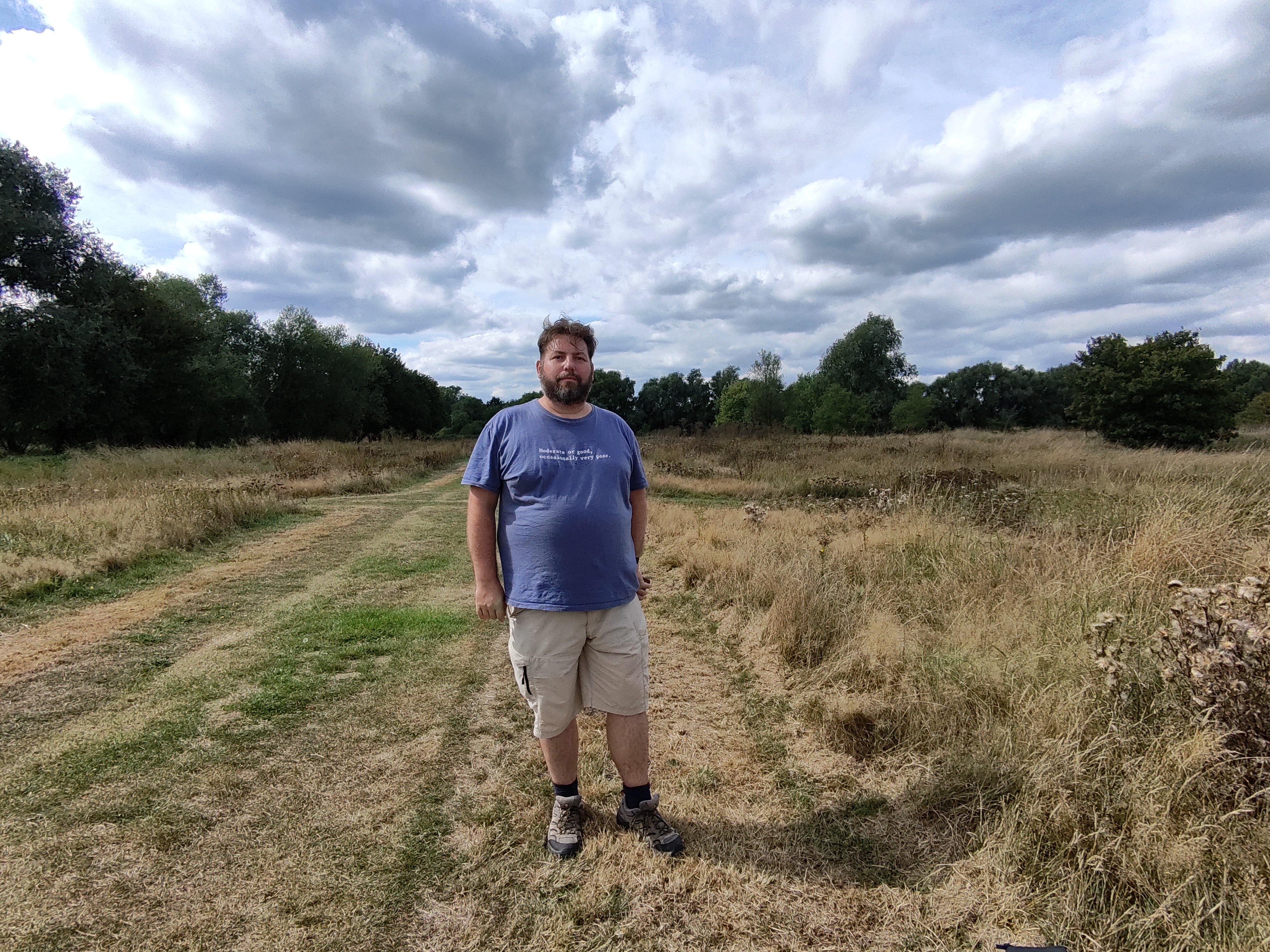
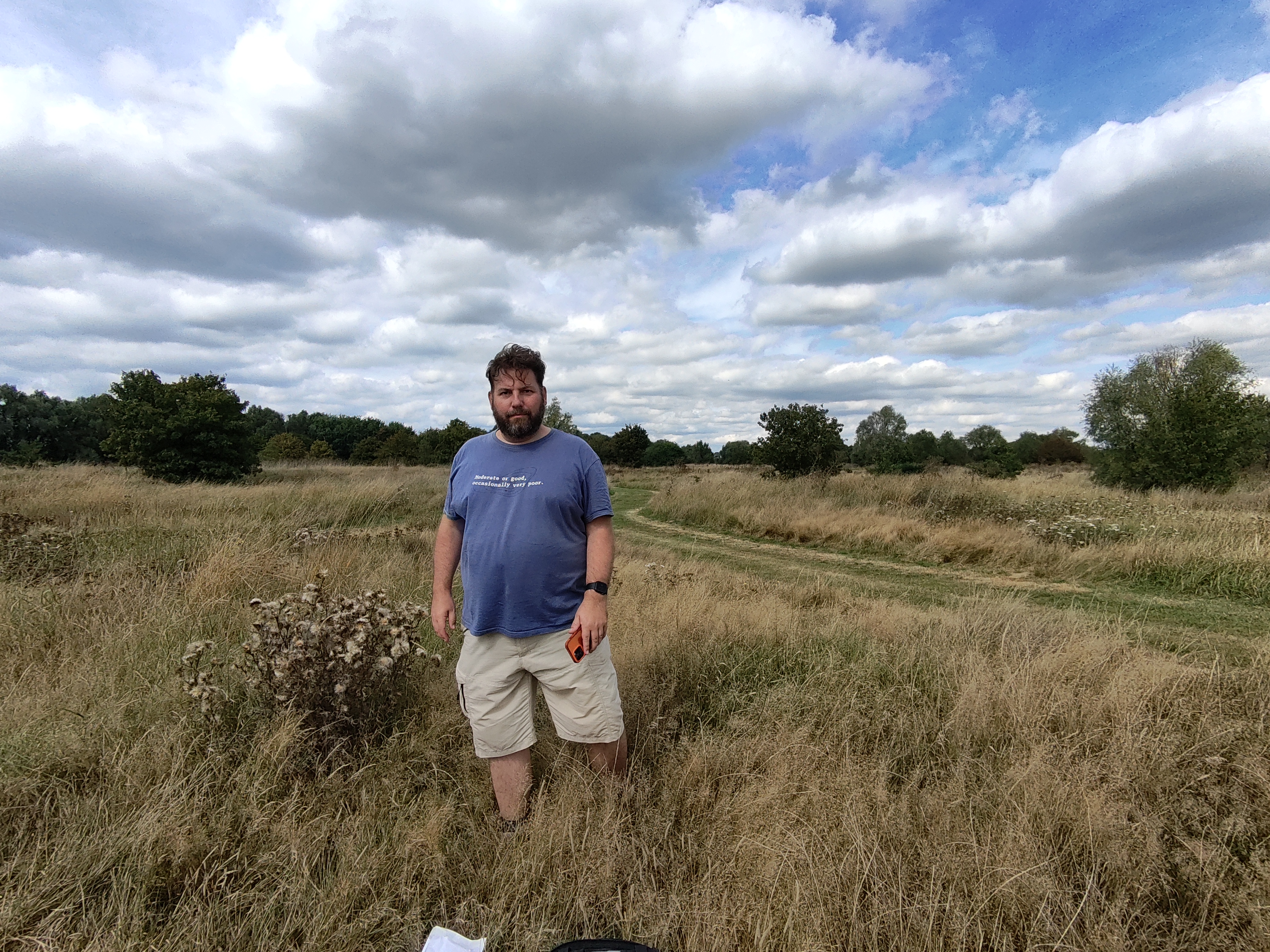

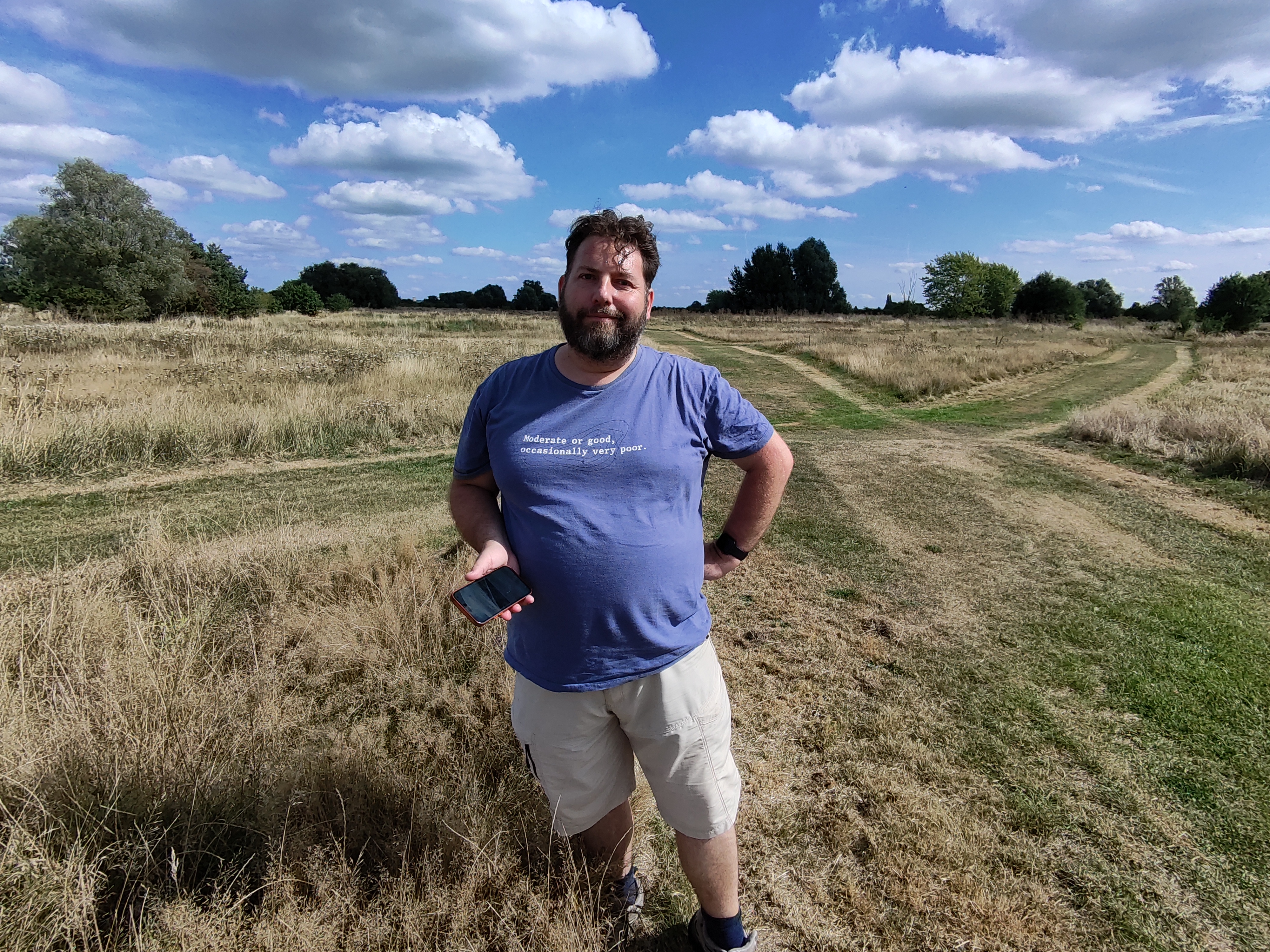
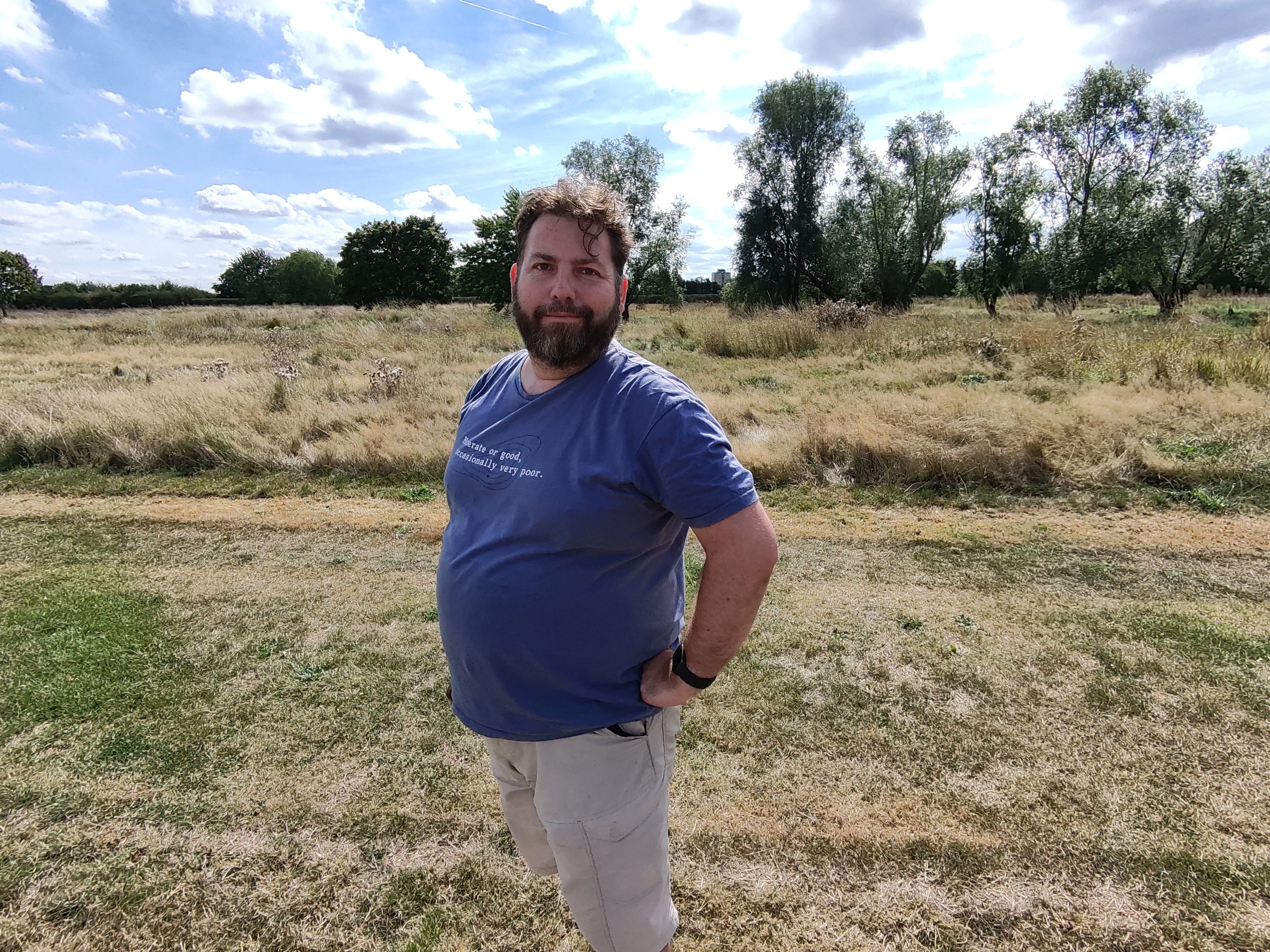
Above: sample stills shot with the HoverAir X1
Not only does the camera's exposure system simply make better choices than budget drones – broadly on a par with a DJI Mini series drone, I'd say. Perhaps even smoother in transition. Gesture photo is a feature widely seen on budget drones, but I liked that the Hover Air X1 cunningly waits a couple of seconds after you perform the 'peace' symbol to allow you to re-pose. Not all photos need to be peaceful (though it will stop recording video to take the photo, so be careful with the gestures).
The 2.7K video is also comparable in quality to the Mini series drone; perhaps not quite up to the standard set by those drones which boast 3-axis stabilizers, but not as far off as you might imagine. The 1-axis plus EIS approach is doing the business and while leaves and grass will reveal digital processing on close examination, I've seen poorer video from drones with gimbals. Freeze-frames do, however, look a bit artificial but when played it all seems to work.
Above: sample videos clips shot with the HoverAir X1
The only other risk to the drone's video, and in general, is physics. With a weight lower than most phones, and the sail area that the cage creates, it's impressive that it can cope with a breeze up to force 4, but anything over that and there is a real risk of nudging the camera beyond the point stabilization can cope – we saw a couple of these when testing in breezes.
Hover Air X1: Overall verdict
It's difficult to be entirely objective about a device that doesn't exactly compare to other drones, but the Hover Camera X1 achieves its own goals admirably – on its own terms, this is an easy win. The decision which now confronts you, as a potential owner, is simple: is this what you want from a drone?
✅ It's really small, light and safe thanks to the cage design
✅ No prior knowledge of drones is needed to get great shareable photos and videos
Rush out and buy yours now if you're looking for a flying camera which makes you the center of attention. It costs less and weighs less than a GoPro, and it can fly! With no need for phone control, you can take it anywhere and pass it between friends with only a few words of explanation.
There is also something inherently tidy about the way the drone works by taking and recording shots of limited length. It's all too easy to record very long clips which choke your editing software and fill memory cards with most drones which makes them very hard to manage. Or, and I've done this, forget to press record at all and miss the most amazing shot. Neither happens here, and there is no need to manage memory cards, which, honestly, is great.
To fly longer, or with more control: All DJI's drones offer some smart flights, but have controllers and longer batteries, so check the DJI Mini 2 SE, while the Potensic Atom SE is an interesting budget option.
For collision avoidance: All-round sensors and AI aren't cheap; the DJI Mini 4 Pro is the place to start.
The drone does allow a go at manual operation, using an on-screen control layout on the phone, but this is definitely not the X1's primary function, so if you want to pilot a drone with sticks for more creative control you should hold back and look elsewhere. Think of this aspect of the drone as an introduction to a wider creative universe, or an occasional extra – compared to a 'real' controller with sticks and radio range it would quickly become frustrating.
For a relatively limited range and number of possible shots you might see this drone as quite expensive – but at the same time it achieves things that even much more expensive AI devices didn't quite manage (I'm looking at Skydio here). Balancing common sense and prioritizing portability and safety over unlimited flexibility or maximizing achievements in arbitrary specifications like range, the Hover Air X1 has effectively created a new drone category – and stamped a lot of authority on it too.
How I tested the Hover Air X1
I tested the Hover Air X1 over several flights in a preferred safe location near London, but not too near to any airfields. I usually try to test drones in a mix of weather (and I've often found that the UK being what it is I might only have to wait a few minutes, perhaps a single battery, for a complete change in wind and light!) I do not test outside legal constraints.
Ordinarily, I test drones using manual flight patterns based on typical consumer and professional patterns – orbiting the subject, getting an aerial view, that kind of thing. Here, of course, I've placed the emphasis on the AI options since the manual control is just one mode.
Either way, I have been flying drones since back when you needed to build them yourself (though in recent years I tend not to reach for the soldering iron). In that time I have flown nearly every major consumer and many professional drones in the last 13 years since 2010, and written several books about them.

With over 20 years of expertise as a tech journalist, Adam brings a wealth of knowledge across a vast number of product categories, including timelapse cameras, home security cameras, NVR cameras, photography books, webcams, 3D printers and 3D scanners, borescopes, radar detectors… and, above all, drones.
Adam is our resident expert on all aspects of camera drones and drone photography, from buying guides on the best choices for aerial photographers of all ability levels to the latest rules and regulations on piloting drones.
He is the author of a number of books including The Complete Guide to Drones, The Smart Smart Home Handbook, 101 Tips for DSLR Video and The Drone Pilot's Handbook.
